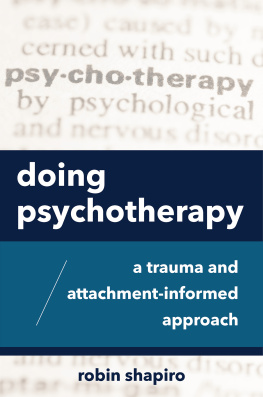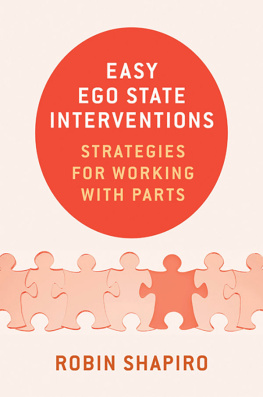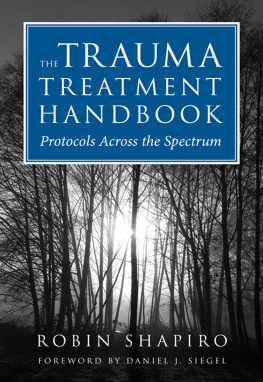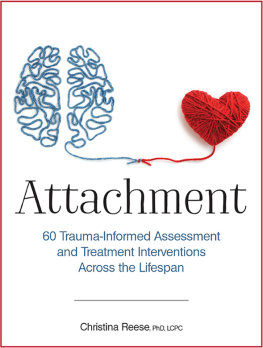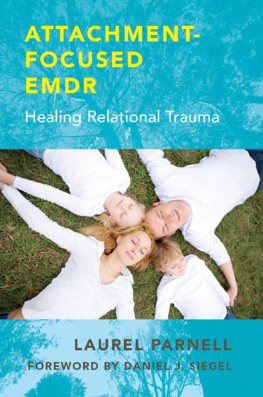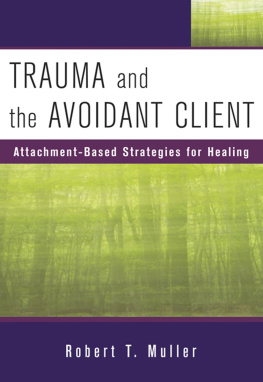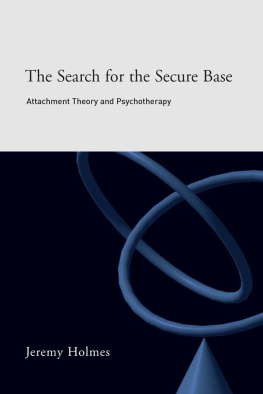Robin Shapiro - Doing Psychotherapy: A Trauma and Attachment-Informed Approach
Here you can read online Robin Shapiro - Doing Psychotherapy: A Trauma and Attachment-Informed Approach full text of the book (entire story) in english for free. Download pdf and epub, get meaning, cover and reviews about this ebook. year: 2020, publisher: W. W. Norton & Company, genre: Home and family. Description of the work, (preface) as well as reviews are available. Best literature library LitArk.com created for fans of good reading and offers a wide selection of genres:
Romance novel
Science fiction
Adventure
Detective
Science
History
Home and family
Prose
Art
Politics
Computer
Non-fiction
Religion
Business
Children
Humor
Choose a favorite category and find really read worthwhile books. Enjoy immersion in the world of imagination, feel the emotions of the characters or learn something new for yourself, make an fascinating discovery.
- Book:Doing Psychotherapy: A Trauma and Attachment-Informed Approach
- Author:
- Publisher:W. W. Norton & Company
- Genre:
- Year:2020
- Rating:5 / 5
- Favourites:Add to favourites
- Your mark:
- 100
- 1
- 2
- 3
- 4
- 5
Doing Psychotherapy: A Trauma and Attachment-Informed Approach: summary, description and annotation
We offer to read an annotation, description, summary or preface (depends on what the author of the book "Doing Psychotherapy: A Trauma and Attachment-Informed Approach" wrote himself). If you haven't found the necessary information about the book — write in the comments, we will try to find it.
Doing Psychotherapy: A Trauma and Attachment-Informed Approach — read online for free the complete book (whole text) full work
Below is the text of the book, divided by pages. System saving the place of the last page read, allows you to conveniently read the book "Doing Psychotherapy: A Trauma and Attachment-Informed Approach" online for free, without having to search again every time where you left off. Put a bookmark, and you can go to the page where you finished reading at any time.
Font size:
Interval:
Bookmark:

doing
psychotherapy
 a trauma and
a trauma and
attachment-informed
approach
robin shapiro

W.W. NORTON & COMPANY
Independent Publishers Since
A Norton Professional Book
Note to Readers: Standards of clinical practice and protocol change over time, and no technique or recommendation is guaranteed to be safe or effective in all circumstances. This volume is intended as a general information resource for professionals practicing in the fields of psychotherapy and mental health; it is not a substitute for appropriate training, peer review, and/or clinical supervision. Neither the publisher nor the author(s) can guarantee the complete accuracy, efficacy, or appropriateness of any particular recommendation in every respect. As of press time, the URLs displayed in this book link or refer to existing sites. The publisher and the author are not responsible for any content that appears on third-party websites.
ADVANCE ACCLAIM
This is one of those books that every aspiring psychotherapist should be reading. Why? Because its the clearest, most thorough, most compassionate look inside the work of psychotherapy that Ive ever encountered. Its also a book that we seasoned folks might want to consider as a reminder of why were doing this challenging, rewarding work. This book is like a consult session with one of the best.
Laura S. Brown, Ph.D., ABPP, Independent Practice of Consultation and Forensic Psychology, Seattle WA
A compendium from a highly skilled therapist and accessible author. Books are wrestled into creation, wrought out of lived-experience and wisdom. The word therapist is from the Greek, Therapn. In peace-time the Therapn was a Kings most-trusted advisor; in war, his personal guard who fought alongside him. This is a brilliant metaphor that fits Robin Shapiro perfectly. Doing Psychotherapy will equip and empower you; I will be adding it to my students required reading.
Paul Miller, M.D., DMH, MRCPsych, Visiting Professor, Faculty of Life and Health Sciences, School of Nursing at Magee Campus, EMDR Europe Accredited Trainer
doing
psychotherapy
In loving memory of Tony Ishisaka and Thom Negri, two of my first, and best, teachers.
E motionally healthy people are capable of functioning in the world. They are capable of tolerating and regulating their emotions, attaching to loving people, understanding themselves and others, having fun, and finding meaning in their lives.
People who come to therapy are having trouble with some or all of these functions. Psychotherapy is the treatment of clients with emotional and/or behavioral problems; it brings clients to emotional health via interactions with a trained mental health provider.
Psychotherapists use their skills and their connection with clients to promote function, emotional regulation, healthy attachment, understanding, and meaning. Therapists help clients clear the embodied trauma that keeps them braced for danger. They help clients rewire old attachment responses, making new, connectible-but-discerning ones. They help put the clients functional parts in charge. They assist clients to choose assertiveness over passivity or aggression, to keep a mindful presence in place of dwelling in the past or on the future, to use/engage skills for negotiating loving relationships and parenting, and how to process the grief when relationships change.
From the first contact to the last session, good therapists are emotionally available, stable, and caring. They accept and respond to all of their clients emotions, providing reparative experiences for people who lacked, and still lack, adequate responses in their social world. Some therapists challenge thoughts (e.g., cognitive behavioral therapy [CBT]); some focus on emotion (Accelerated Experiential Dynamic Psychotherapy [AEDP]); and some focus primarily on the body (sensorimotor psychotherapy, Somatic Experiencing). Still other therapists work with components of each of these (EMDR, CIMBS). Some therapies focus primarily on the therapeutic relationship as the transformational engine (dynamic therapies, CIMBS). A good therapist, regardless of primary modality, attends to each of these therapeutic components.
Good therapists are emotionally available, stable, and caring.
Why Do Therapy?
As a therapist, you have the privilege of helping a variety of people heal in the context of deeply intimate relationships, sharing their grief and their triumphs. You get to master new therapies and new situations while taking part in peoples transformation. And you get to watch your own affect, tolerance, skills, and understanding grow every day of your practice. In the meantime, you get to make a living and consort with great colleagues who are also dedicated to assisting people in their transformation.
Here are some reasons given by specific therapists in response to my Facebook post 5/17/2017:
lise S. Andr: What I love about psychotherapy is this: Its real work in association with someone, the ahaaaa moment of integration of a new understanding, transforming the life for the patient. The work itself is a mindful meditative dance like a pas de deux. It is a gift, the patient is learning, and me too. And I am often amazed with the change occurring in front of me.
Cherie Lindberg: Sitting soul-to-soul with another human being, holding space, being mindfully present and watching the magic happen.
Shannah Ziatz: It forces me to be humble, hungry for further knowledge and continued progression, not only for myself or the client, but for the field of science. It makes me want to be better, a better version of myself, that I can emanate to others and make astounding differences in those I serve.
Sabrina Cabassi: Because with psychotherapy, sometimes miracles happen.
Carrie McMullin: I love that I get to use both my scientific mind and my creative mind for this work, and that I get constant exposure to whats real in life.
Most psychotherapists love their work. Most love their clients and are loved in return (even if people dont use that language). Therapy is about connecting and healing. This is what attracts people to and keeps people in the profession.
W hat therapies should you use? Short answer: As many as possible. Every therapy is a lens through which to diagnose, explain, and treat a problem. The more lenses through which you can see your clients, the more solutions you have for their problems. If you have only one lens, you may see some clients as untreatable. With many lenses, new solutions may appear. Jerome Frank (1961) offered four components of good psychotherapy:
1. An emotionally charged relationship
2. A therapeutic environment
3. A rationale or myth that provides a plausible explanation for the symptoms
4. A procedure to resolve them
Id like to add a fifth and sixth component.
5. Give experiences rather than lectures, and
6. Bring in somatic, cognitive, and emotional parts of experience into all interventions.
Somatic therapies, eye movement desensitization and reprocessing (EMDR), ego state therapies, and many others connect with the whole self. When you are learning new therapies, look for which components of awareness they use. And prepare to add whatever the therapy leaves out.
As you assess new clients, look through the lens of several therapies. With each, ask yourself,
Next pageFont size:
Interval:
Bookmark:
Similar books «Doing Psychotherapy: A Trauma and Attachment-Informed Approach»
Look at similar books to Doing Psychotherapy: A Trauma and Attachment-Informed Approach. We have selected literature similar in name and meaning in the hope of providing readers with more options to find new, interesting, not yet read works.
Discussion, reviews of the book Doing Psychotherapy: A Trauma and Attachment-Informed Approach and just readers' own opinions. Leave your comments, write what you think about the work, its meaning or the main characters. Specify what exactly you liked and what you didn't like, and why you think so.

